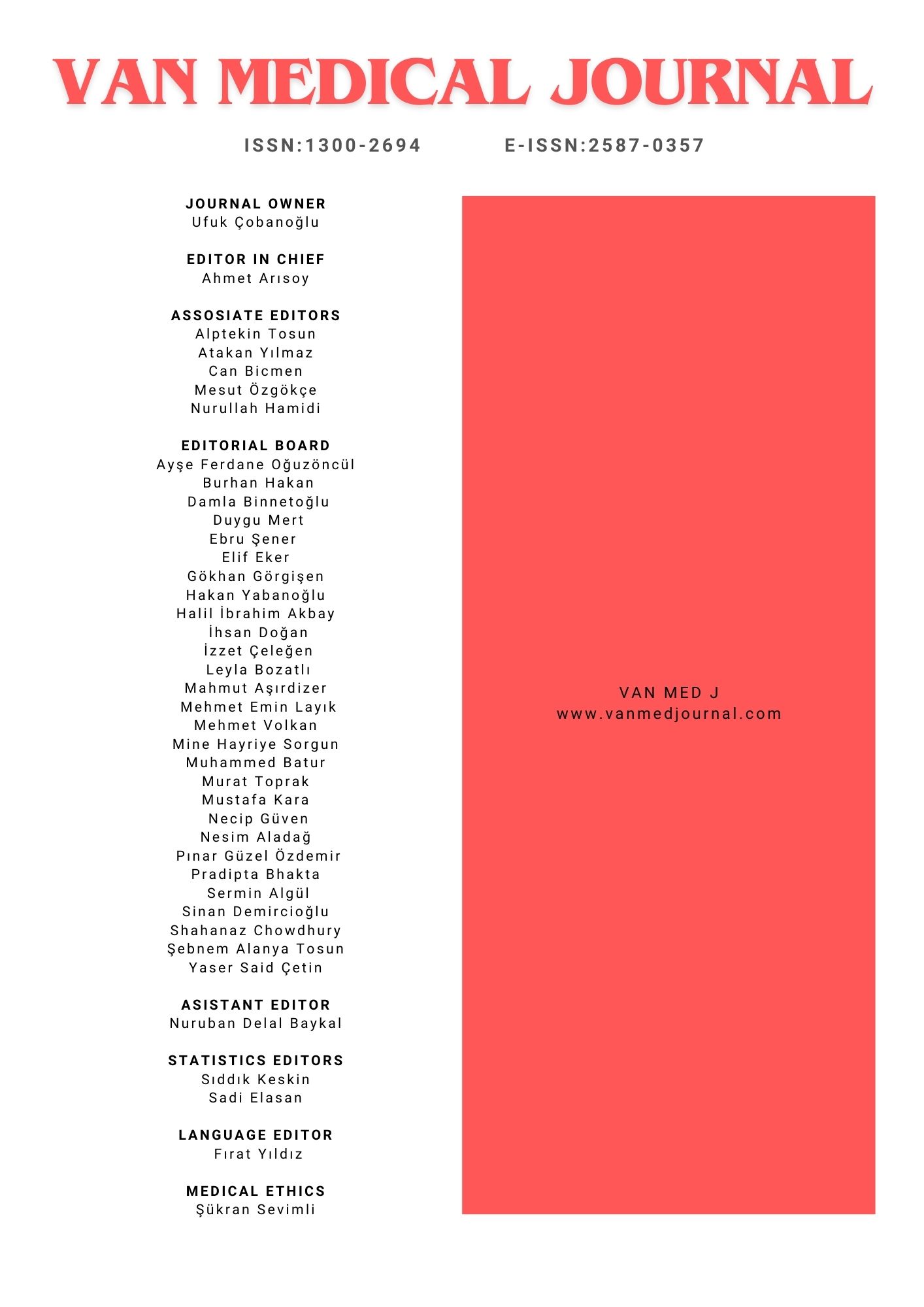Fine Needle Aspiration Biopsy Results in The Light of Thyroid Tissue Pathology
Saliha Yıldız1, Esra Akkuş Duyan21Department of Endocrinology, Van Yuzuncu Yil University, Van, Turkey2Department of Internal Diseases, Van Research and Education Hospital, Van, Türkiye
INTRODUCTION: Thyroid cancer is the most common endocrine gland malignancy and thyroid fine needle aspiration biopsy (TFNAB) is used for its detection. The aim of this study was to analyze the cytologically detected malignancy, the factors affecting it and the compatibility of surgical tissue pathology.
METHODS: Patients who underwent TFNAB in the Endocrinology Outpatient Clinic were retrospectively analyzed in terms of age, gender, TSH (Thyroid stimulating hormone) value, nodule size, localization, initial and rebiopsy results (Bethesta 2023), and malignancy and multinodularity in those who underwent thyroidectomy after TFNAB.
RESULTS: The study was conducted with data from 631 patients. A positive correlation was found between age and nodule size (p=0.040, r: 0.08). TSH was found to be significantly higher in patients with malignant and atypical cytology than in those with benign cytology (p=0.012). With the contribution of rebiopsy, the total cytological malignancy (Bethesta V, VI) rate was 7.29%. Of the 84 patients with tissue pathology, 50 (59.5%) were malignant and 34 (40.5%) were benign. In patients with malignant tissue pathology, 39 (78%) had multinodular goiter (MNG) and 11 (22%) had single nodules (p=0.031). TFNAB specificity was 60%, Negative Predictive Value (NPV) was 75%, False Positive Rate (FPR) was 40%.
DISCUSSION AND CONCLUSION: TSH was significantly higher in cases with malignant and atypical cytology results, and multinodularity was significantly higher in patients with thyroid cancer compared to solitary in tissue pathology. As a result of surgery the specificity and NPV for TFNAB were found to be low and FPR was high compared to the literature.
Manuscript Language: English

